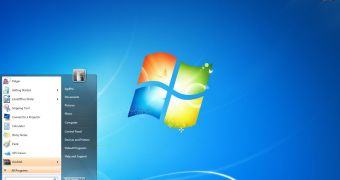Microsoft came up with a convenience rollup update for Windows 7 earlier this week in an attempt to provide users still running this OS version with an easy way to bring their PCs fully up to date without having to install hundreds of patches when setting up a new computer.
At this point, this is pretty much the closest we can get to Service Pack 2, and Microsoft says in a TechNet article that there were several reasons it released this update.
First and foremost, it’s because the company wants “to help customers catch up with available updates,” which would otherwise require being installed one by one. While this is indeed a really good reason for providing a cumulative update, it arrives a little bit too late, especially when taking into account that the first service pack was launched in 2011.
The final goal: convince users to upgrade to Windows 10
At the same time, Microsoft also adds that it aims “to help customers get the most consistent experience with the Windows 7 Service Pack 1 and Windows Server 2008 R2 SP1 family of operating systems as they evaluate the next platform.” Although this might sound a bit odd, given the fact that Redmond’s betting big on Windows 10, the plan here is to make the Windows 7 experience as good as possible, hoping that customers would decide to move to Windows 10.
Businesses are also targeted by this new cumulative update, Microsoft explains.
“In the event diagnostic efforts are needed in current production environments, there is less chance that an available update needs to be applied before analysis, and/or remediation can begin. The goal is to reduce time-to-resolution for diagnostic or analysis efforts, and helping to reduce the total cost of ownership (TCO),” it says.
And last but not least, one main goal of the convenience rollup is to ensure that PCs running Windows 7 have the same updates that the Microsoft servicing team is using when testing.
Without a doubt, this cumulative update comes in very handy to those who intend to perform a clean install and don’t want to lose hours getting patches via Windows Update. The rollup is available in the Microsoft Update Catalog here.

 14 DAY TRIAL //
14 DAY TRIAL //